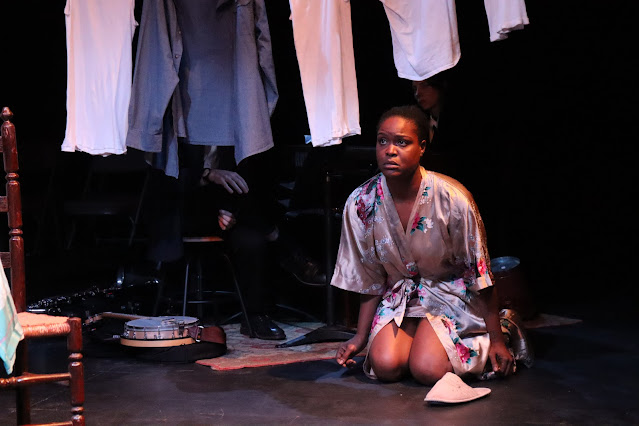Alfredino, Italy in a Deep Well (Alfredino, l'Italia in fondo a un pozzo)
Written and performed by Fabio Banfo
Directed by Serena Piazza
 |
| Fabio Banfo. Photo courtesy of MaMiMò |
With today's decentralized media landscape, it is harder to imagine an entire nation watching a live television broadcast together. It is less difficult to imagine the cultural impact that such moments have had. For Italy, the 1981 coverage of the attempted rescue of a boy named Alfredo Rampi, who had fallen into a deep, narrow well in the village of Vermicino, was the first such shared televisual experience, with millions watching concurrently. Fabio Banfo's multi-award-winning
Alfredino, Italy in a Deep Well (
Alfredino, l'Italia in fondo a un pozzo) transforms these events into a tense, reflective, and affecting solo show. Presented in Italian with English supertitles, Alfredino is currently part of the 2025
In Scena! Italian Theater Festival, which runs from May 5th through 18th, with performances in all five boroughs, almost all of which are free with an RSVP.
As the show's first-person narrator, Banfo begins with some rumination about being born in 1975, the same year as the unfortunate Alfredino (meaning "Little Alfredo").This correspondence represents a source of both connection and, given Alfredino's death, contrast and what-if speculation. Soon enough, Banfo shifts into the first of various other characters that he inhabits to tell this story, from a journalist who hopes the coverage will make him to a man selling food to the ever-growing crowds around the well to would-be volunteer rescuer Angelo Licheri, who spent almost twice as long upside-down in the constricting shaft of the well as is considered safe.
 |
| Fabio Banfo. Photo courtesy of MaMiMò |
Banfo often delivers the I-narrator portions from the extreme front edge of the stage, lending them an additional intensity, and elsewhere, he cycles among minimal props–a cooler and bread roll, a sock puppet, a top hat, shadow puppets representing robots from an anime that Alfredino enjoyed–to maximum effect. One particularly noteworthy example is the employment of a tiny, child-sized chair in the beginning of the play to emphasize the parallel between Banfo's I-narrator and Alfredino when Banfo sits in it himself and to emphasize Alfredino's absence during the play's conclusion as Branfo, as Alfredino's mother, drizzles sand from his hand onto the empty seat. Despite the fact that spectators know the ultimate outcome from the beginning of the show–for some, even before that–Branfo's arresting performance keeps the tension thick. The show observes that the television broadcasters thought that they were showing up for a guaranteed feel-good story and became trapped in a multi-day tragedy, and their live coverage raises questions about voyeurism, spectacle culture, and real-life suffering as entertainment. The play also points out that the attention garnered by the event evokes by contrast the innumerable others who die tragically with no marathon tv broadcast or national memorialization. Are these others, including children, less deserving of such outpourings of sympathy and efforts to help? At the same time, while the story that the play unfolds is a tragedy of accident and human error, it also testifies to a widespread if not fundamental human impulse to altruism and reminds us that Alfredino's bereaved mother used her personal loss to enact change. The show asks us to think about what we want to forget and what we need to remember;
Alfredino itself, meanwhile, insists on being remembered.
-John R. Ziegler and Leah Richards
More from In Scena! 2025News: In Scena! Italian Theater Festival NY Announces Venues and Performance Schedule for 2025 Festival





Comments
Post a Comment